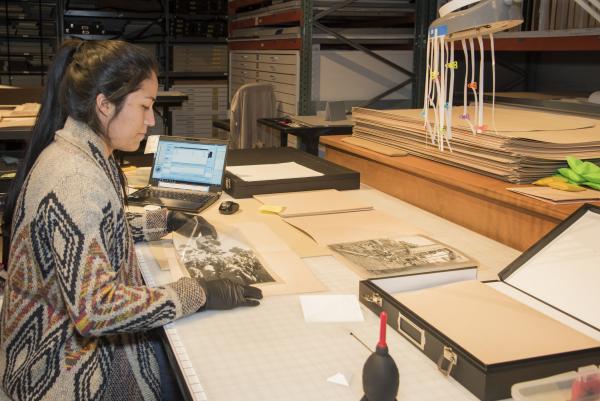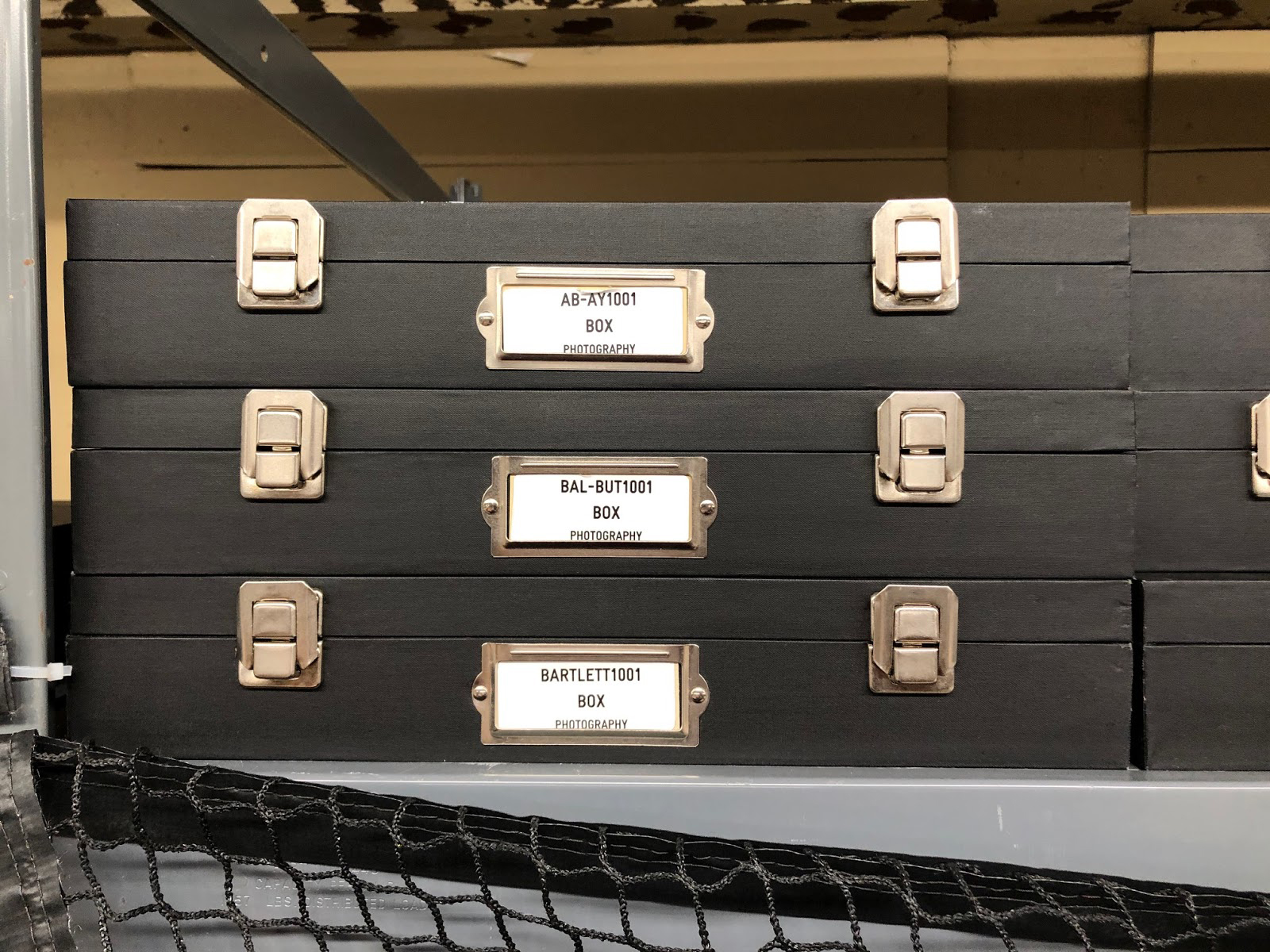In April 2017, I embarked on a journey to inventory the Photography collection. The collection was (and still is!) growing at a fast pace, and a complete inventory was needed in order to do a few things: reorganize, rehouse, and prepare the collection for the upcoming move off of LACMA's east campus. A daunting task, indeed, but I was up for the challenge and excited to be part of such an important project.
The Photography department was established in 1984 and in the span of 36 years the collection has grown to over 18,000 artworks. As the collection expanded, photographs were housed in alphabetical order with a variety of different sizes in any given storage container. While a major part of this inventory was to account for all photographs ahead of the move, it also was the perfect opportunity to reorganize the collection into standard sized containers and develop a new container naming system. This new system will help the Collections Management team maintain organization of the collection, as well as provide a simple and functional way of integrating new artworks into the collection. This inventory process was also designed to limit the handling of artwork as much as possible during and after the project was complete.
Prior to the inventory project, an IMLS grant had been awarded to LACMA in 2014 in order to conduct a conservation survey on the Photography collection. From this initial review, I could gather important data that would otherwise lengthen the project's timeline, such as approximate dimensions, rehousing suggestions, and any conservation notes. It also provided guidance and structure to the inventory project. This survey resulted in standardized sizing for the folders and archival boxes used to house photographs. Standardized sizing proved to be one of the most important aspects of organizing the collection, as not all photos are the same size and not all photos of different sizes should be housed together. The standard sizes we store in boxes are 11x14, 16x20, 20x24, and 24x30 inches. Large photographs are typically housed in flat files or other types of housing, but for the purpose of this project the inventory focused on photos 24x30 or smaller.
Before handling any photographs, a large spreadsheet helped me theoretically organize the collection. With all photographs, 24x30 or smaller, listed in this document, I sorted by size, artist last name, artist first name, and then object number. With this sorted list, I could assign preliminary container names. I say preliminary because names could change depending on whether or not I could physically fit certain photographs in the box. As an example, let's say I gathered eight photographs from the list. I would first organize them alphabetically by the artist's last name. I would then pick the first artist and last artist from the group and use the first two or three letters from the artists' names to come up with the box name. This detailed method of naming boxes addresses the growing nature of LACMA's photography collection. With this naming system, photographs can be easily integrated into boxes as they are acquired. The box names can evolve and can be changed as necessary.
Once I organized and created names of boxes within the spreadsheet, I could start to actually gather photographs from their old homes. Going down the list, I would gather about three to four containers worth of photographs from different storage rooms and then begin the inventory process. The process of inventorying involved taking accurate measurements of each photo and its supports (such as mat boards), inputting data into LACMA's collections database, labeling the physical object, and taking a documentary photo. Once this process was completed, I could begin rehousing.
I learned early on in the rehousing process that between eight and 12 photographs could safely fit in a container. Each box usually had a mix of matted and loose photographs. Each photograph needed a piece of interleaving (LACMA uses Photo-Textile Interleaving Tissue, which we call Photo-Tex). Matted photographs only need Photo-Tex, whereas loose photographs need to be housed in an archival folder with Photo-Tex on top of the artwork inside the folder. Matted artworks were placed in the box first so that they rested on the bottom. Works with supports would be stacked next, and finally loose photographs in folders were placed at the top of the box. This method of stacking ensured artworks with more weight and rigid edges would not weigh down the loose photographs and potentially cause any damage.

The inventory project did not come without challenges. There were some conundrums throughout the project, such as numbering issues and object and database discrepancies. This inventory brought them to light and allowed me to fix them with the help of the Photography curatorial department and Associate Collections Manager for Works on Paper, Sarah Newby. It also gave me the opportunity to learn a bit more about how to do research in order to resolve these types of issues. I learned just how important it is to have a paper trail and files on each of the artworks in a museum collection! So much information can be found in these files.
I completed the Photography department inventory in early 2019. By then, I had inventoried over 10,000 photographs and rehoused close to 600 containers! On average, I was able to completely inventory and rehouse two to four containers a day. In the two years that I worked on the inventory, I learned so much about photography, the different photographic processes involved, and how and when to use a variety of rehousing methods. The inventory, reorganization, and rehousing process of the Photography collection informed our needs for the physical move of the collection that took place in 2019. I am incredibly proud of the work done and of the entire team who successfully moved LACMA's collection.




